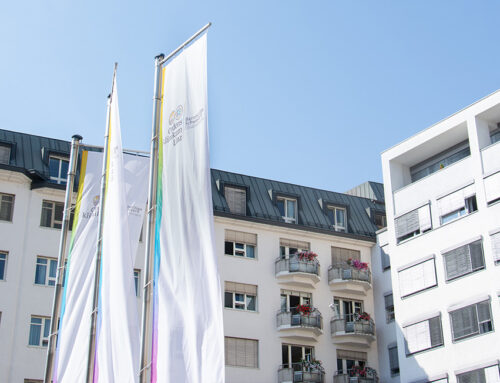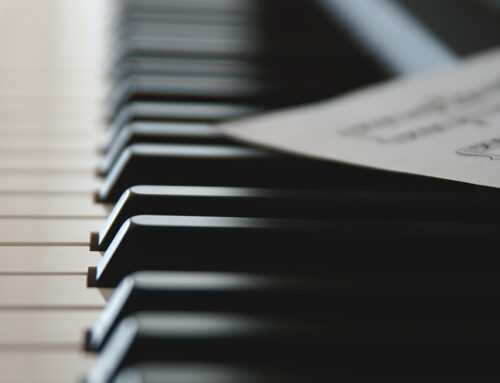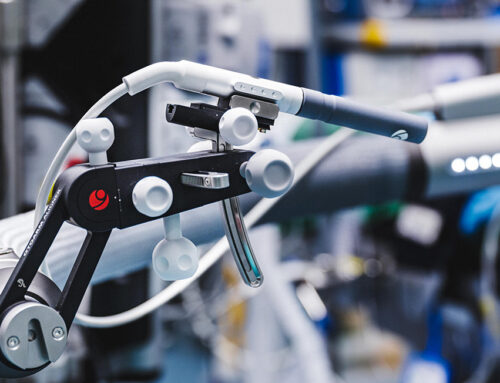Brochure with audio course accompanies children with single-sided deafness on their journey to hearing with both ears
New rehab material supports therapists and educators in parental information and in listening exercises for children and toddlers with cochlear implants who are deaf on one side.
Eva Kohl

©2024 MED-EL - All rights reserved
"I love all games. I just don't like hiding. I never hear the direction from which the others are shouting," says Mika the mouse. Sometimes she even experiences dangerous situations: for example, when a car seems to come "suddenly out of nowhere" because she did not hear it coming. Mika hears well - at least everything that comes from the right. But after this incident, the mouse doctor said to her, "Mika, your left ear is deaf!"
Most people hear equally well in both ears. If not, one speaks, depending on the extent of the hearing loss, of asymmetric hearing loss or single-sided deafness, abbreviated from the English SSD. The risk of deafness of the opposite ear occurs mainly after a sudden hearing loss or progressive hearing loss without a clear cause.
Mika receives a cochlear implant (CI) on her deaf left side. "My cochlear implant made my ear magical!", Mika says about her magic ear. "And now I will show you how to use your magic ear!"
Why we should hear well on both sides
The internationally renowned scientist Jinfeng Liu, primary of the ENT department at Peking University Hospital in China, has been researching the consequences of asymmetric hearing loss and single-sided deafness for years. He suspects that the "invisibility" of unilateral hearing loss and the lack of knowledge about it can even lead to poorer academic performance in the affected children than bilateral moderate hearing loss in children who, however, make use of special support services.
The brochure Mika's magic ear explains clearly and simply why single-sided deafness should be treated (in children and adults):
- For good directional hearing, you need both ears.
- Listening on both sides is important for orientation, for example in road traffic.
- From the affected side, you can hardly perceive shouts, which limits passive accessibility.
- With two ears, you can understand quiet speech better, and also normal speech in difficult hearing situations.
- Unilateral hearing increases hearing effort and may have psychosocial consequences.
The longer the hearing loss persists, the greater the risk that the auditory nerve will degenerate and the brain will reorganize. This should be addressed quickly! Providing hearing support for the deaf or “weaker” ear stimulates and trains the auditory nerve and central hearing.
The consequences of unilateral hearing loss
Mikas Zauberohr is a joint project of MED-EL together with the Therapiezentrum für Hören und Kommunikation - Praxis Hanik. "One in every 1,000 children is born with unilateral deafness, and by the time they enter school, the proportion of children with unilateral hearing loss is as high as three to six percent," it says there.
Unilateral or asymmetric hearing loss impairs language acquisition in young children and school development in older children: 45% of adolescents with normal hearing graduate, but only 8% of adolescents with untreated unilateral deafness! The main reason is the increased listening effort and fatigue that come with hearing on only one side. Psychosocial consequences are also possible — in people of all ages.
"The project is intended to help create a better understanding and provide the best possible support on the way to successful therapy," says the website of Praxis Hanik. The brochure offers children and parents easy-to-understand explanations and numerous tips. For experts in speech therapy and early intervention, it includes a status questionnaire on the medical history and 15 child-friendly exercise units: for hearing with CI in general and for the targeted training of those hearing skills for which bilateral hearing is necessary. Because Mika knows that: "A magician has to learn spells...and our magic ears have to learn to hear first."
Learning to hear and understand
"For children with unilateral deafness, it is important to create and maintain motivation and to make clear the positive effects of the cochlear implant," explains MED-EL. "Having a good ear that takes on all tasks most of the time is helpful in everyday life but sometimes inhibits the will to wear the CI." Later, the hearing success with CI also becomes more obvious in SSD than in users who are deaf on both sides.
The playfully structured exercises in Mika's magic ear counteract this and are so enjoyable and fun that even hearing siblings like to join in sometimes. The associated audio files are available free of charge to specialists at the MED-EL Academy. And they can be streamed directly to the CI ear.
The aim of the therapy is to help people better understand noise, to listen more carefully and to reduce fatigue. But even small successes can be celebrated: the turning toward the sound source, the resolution of a side preference or even asking for the audio processor in the morning.

©2024 MED-EL. All rights reserved
Mikas Zauberohr
Optimal monitoring of unilateral deafness in children.
For experts in speech therapy, early childhood education and special education: Introduction and free audio files at the MED-EL Academy.
For parents and children: printed brochure at MED-EL and Zentrum Hören (Vienna) - Cost: € 40,-






